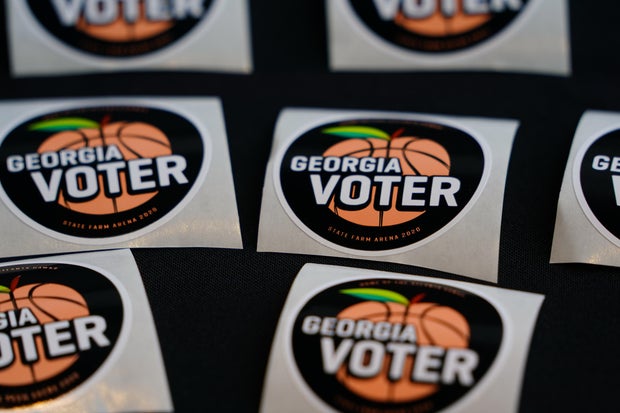Finance
10 Top Financial Planning Tools and Apps in 2024

Whether you’re trying to build wealth, saving for college or planning for retirement, financial planning tools can help you budget for day-to-day expenses and reach your long-term financial goals.
For You: 9 Easiest Ways To Maximize Your Savings in 2024
Up Next: 7 Reasons a Financial Advisor Can Grow Your Wealth in 2024
These 10 top financial apps and tools can help you save money while planning for your future.
Earning passive income doesn’t need to be difficult. You can start this week.
10 Top Finance Apps at a Glance
|
App |
Pricing |
Best for |
Pros and Cons |
|
Acorns |
Bronze $3/month, Silver $6/month, Gold $12/month |
Individual long-term retirement investing |
Pro: Only $5 to begin investing Con: No direct bitcoin investment access |
|
Buddy |
$9.99/month, $49.99/year |
Sharing budgets across multiple accounts |
Pro: Can customize categories and colors Con: Only available on iOS |
|
EveryDollar |
Free, $17.99/month or $79.99/year |
Providing structure in giving, saving and spending |
Pro: Can create unlimited budgeting categories Con: Limited features in free version |
|
Fudget |
Free, $14.99/6 months, $19.99/year |
Providing a simple web-based and mobile budgeting system |
Pro: 7-day free trial with bi-annual and annual plans Con: Only one budget on one device with free version |
|
Goodbudget |
Free, $80/year |
Those who like the envelope budgeting concept |
Pro: Email support with paid version Con: Only community support with free version |
|
Honeydue |
Free |
Couples who manage finances together |
Pro: Available on Android and iOS Con: Many customer-reported bugs and issues |
|
PocketGuard |
Free, $6.25/month or $74.99/year$12.99/month or $155.99/year |
Detail-oriented budgeters |
Pro: Lots of features for the price of paid versions Con: Basically useless unless linked to bank accounts |
|
Spendee |
Free; $14.99/year; $22.99/year |
Those who want to manage money on the go |
Pro: Connect to more than 2,500 banks worldwide on premium plan Con: Can’t share wallet with others on free plan |
|
YNAB |
$9.08/month, $109/year or $14.99 monthly plan |
Providing a flexible method for managing money |
Pro: 34-day free trial Con: No free version after trial |
|
Monarch |
$5.83/month, $69.99/year |
Tech-savvy personal investors |
Pro: No in-app ads or credit card offers Con: Steep learning curve due to many features |
1. Acorns
Banking with Acorns lets you automatically save and invest your money. You’ll have access to some of the highest available APYs — 3% on checking accounts and 5% on emergency fund accounts. Starting with your spare change, you can sign up quickly to pursue your money goals with an Acorn-recommended investment portfolio. The Acorns app has articles and videos for new and experienced investors to learn strategies and build confidence in investing, saving, earning and other financial topics.
2. Buddy
This simple budgeting app, Buddy, lets you track your expenses to prevent overspending. It’s completely customizable, and you can invite others to share your budget and sync their transactions with yours. Another key feature is connecting multiple accounts, including debt, to monitor your net worth. You’ll always know which bills are paid by whom.
Find Out: Average Monthly Expenses by Age: Which Group Is Spending the Most?
3. EveryDollar
Based on the zero-based budgeting concept, EveryDollar helps you plan your giving according to your beliefs, save for emergency expenses and spend money on what you need to be debt free. You can download your budget to a CSV file using the free version. EveryDollar’s financial roadmap feature lets you track your debt payoff progress and see your net worth in real time.
4. Fudget
The Fudget budgeting app is free to download on Windows and Mac desktop platforms and Android and iOS mobile platforms. Each paid subscription includes a seven-day free trial, unlimited budgets and entries, and the ability to share your budget and account with others at no additional charge. Fudget is a simple financial tool that basically works like a calculator without syncing your bank account.
5. Goodbudget
Goodbudget modernized the time-tested envelope budgeting system designed with families in mind to help you track your income and expenses. It’s ideal for couples and families to stay on top of household spending. Financial planning with Goodbudget prevents surprises.
Registering your household for free with Goodbudget gives you 20 envelopes that you can track with one bank account. You also get unlimited debt accounts and debt payoff envelopes, can sync the web app with up to two mobile devices and retain a year’s worth of transaction history.
6. Honeydue
Honeydue may be the answer to harmony in the home regarding couples sharing bills and budgeting. Whether you’re newly married or dating or have been wed for decades, you can track your bank accounts, loans and investments in one place. The app even reminds one or both partners before bills are due.
7. PocketGuard
PocketGuard features include an advanced bill payment tracker in which you can pay your bills on time, manage your subscriptions and prevent late fees by using automatic bill reminders. You can see and organize your bills in one location and track them manually or automatically, even those paid offline.
8. Spendee
You can control your finances with Spendee, including your bank accounts, crypto wallets and e-wallets. Use Spendbee’s smart budgets feature to help you save for future expenses and emergencies. Spendee uses a three-step approach to managing personal finances: Track cash flow by connecting your bank accounts, understand and analyze your spending habits with visuals in the app, and use smart budgets to prevent overspending.
9. YNAB
YNAB uses four rules to manage personal finances: Assign every dollar a job, plan and account for irregular expenses, be flexible and regroup when life happens and stay ahead of the game by using last month’s money to pay for this month’s expenses. YNAB takes the stress out of managing money.
10. Monarch
Monarch lets you manage and track your finances in one app, including investment transactions. Collaborating with your financial advisor or another family member is easy and at no additional cost. You can access Monarch on the web, Android and iOS devices. Monarch uses AI technology to create transaction rules, categorize expenses and predictably organize your payments.
More From GOBankingRates
This article originally appeared on GOBankingRates.com: 10 Top Financial Planning Tools and Apps in 2024

Finance
ATI Promotes Longtime Leader to CFO and SVP of Finance

Rob Foster, incoming CFO of ATI Inc., effective Jan. 1, 2026 [Photo: ATI}
ATI Inc., a Dallas-based manufacturer of high-performance materials for the aerospace and defense industries, announced that James Robert “Rob” Foster will be promoted to senior vice president of finance and chief financial officer, effective January 1, 2026.
Foster succeeds Don Newman, who will serve as strategic advisor to the CEO beginning January 1. As previously announced, Newman will retire on March 1, 2026, and serve in an advisory capacity in that time to allow for a smooth transition.
“Rob is a proven P&L leader with enterprise-wide experience in the areas that matter most to ATI’s continued growth,” Kim Fields, president and CEO, said in a statement. “He brings deep expertise not only in finance but also as an operational leader. Rob played a pivotal role in the successful Specialty Rolled Products transformation, consistently helping ATI to deliver strong returns and shareholder value. I look forward to partnering with him as we enter our next phase of profitable growth.”
Foster, a longtime ATI leader, brings both operational expertise and financial discipline to the CFO role, the company said. He most recently served as president of ATI’s specialty alloys & components business, where he improved efficiency, grew capacity, and advanced the company’s role as a global leader in exotic alloys. Foster previously served as vice president of Finance, Supply Chain, and Capital Projects, overseeing ATI’s global finance organization, capital deployment processes, and enterprise supply chain performance. Earlier in his career, he led Finance for both ATI operating segments and the Forged Products business.
“I’m honored to become ATI’s next CFO,” said Foster. “ATI is well-positioned with a strong balance sheet, focused strategy, and significant opportunities ahead. I look forward to working with our team to drive disciplined investment, operational excellence, and long-term value creation for our shareholders.”
Newman added, “Rob is an exceptional leader who understands ATI’s strategy, operations, and financial drivers. He has delivered transformative results across the organization. I look forward to supporting a seamless transition as we pursue this next step in our succession planning.”
Before joining ATI in 2012, Foster held senior finance roles at API Technologies Corp. and Spectrum Control Inc., where he led ERP implementations, acquisition integrations, and internal control enhancements. He began his career as an auditor at Ernst & Young (EY).
ATI produces high-performance materials and solutions for the global aerospace and defense markets, and critical applications in electronics, medical, and specialty energy.
Don’t miss what’s next. Subscribe to Dallas Innovates.
Track Dallas-Fort Worth’s business and innovation landscape with our curated news in your inbox Tuesday-Thursday.
Finance
Abu Dhabi seeks to build bridge between new media & finance – The Times of India

ABU DHABI: Instead of waiting for the future of media, Abu Dhabi is building it. The city played host this week to leading names from media and entertainment industries at the Bridge Summit, aptly named for seeking to position the emirate at the intersection between new-age media, innovation and investment.The three-day event at Abu Dhabi National Exhibition Centre from Dec 8 to 10 buzzed with energy, new ideas, collaborations and MoU deals as thousands of content creators, media brands, communicators, tech developers, AI innovators, investors and academics — who have been working in isolation — converged to brainstorm ideas, analyse future trends in the media industry and discuss ways to monetise them. How to get around the associated risks of privacy violation, fake news and narratives, defamatory content and online harassment were a natural corollary to the discussions.The idea of Bridge Summit originated at a lunch meeting in Abu Dhabi earlier this year between Sheikh Abdulla Bin Mohammed Bin Butti Al Hamed, chairman of UAE National Media Office, and Richard Attias, the Moroccan events producer associated with the Clinton Global Initiative, Nobel Laureates Conference and Davos Forum. The two discussed how UAE could give media, creators, tech innovators, social media outlets and investors a platform to connect and build the future of media. Eight months later, that dream turned into reality with Bridge Summit.Al Hamed, in his opening address, outlined Bridge Summit’s mission to unite media, technology, finance, and culture in building a more trusted, inclusive, and resilient information order.Speaking to TOI on the sidelines of the summit, Jamal Mohammed Obaid Al Kaabi, DG, UAE National Media Office and Bridge Alliance vice-chairman, said the forum seeks to secure a win-win situation for all, be it govts, media, content creators, social media platforms, gamers, investors and technology providers. “We are trying to help everyone — those who have a story to reach production, a company to reach a customer and govts to understand what’s happening in the market”.He added: “We believe that Bridge can be the brand that people will trust and look at in the future. We can connect it with media initiatives around the world. We believe that positive narrative can be supported through Bridge”.The global media and entertainment industry generated over $2.8 trillion last year, with gaming alone rivaling film and television at nearly $200 billion. Streaming continues to reshape consumption, while nearly 70% of content creators are already using AI tools.Rubbing shoulders at the summit were former heads of state, journalists, representatives of social media platforms, AI innovators, gaming developers, entrepreneurs and media influencers from across the globe; actors Priyanka Chopra Jonas and Idris Elba and footballer Gerard Pique lent it star power.Over three days of fireside chats, panel discussions, workshops and MoU signing, content creators and influencers took lessons from experts and peers on how to tell their stories better and hold their audience’s attention till the last frame.With artificial intelligence (AI) tools revolutionising the media space and content creation industry, engagements delved into how to maintain a judicious balance between human intelligence and artificial intelligence while tailoring content to suit users’ preferences and attention span.Sessions reflected on how the traditional print and TV journalism is being rapidly taken over by digital news content. Justin Smith, CEO of independent global news company Semafor, predicted that human journalist will continue to be relevant as the primary resource for original information, but must learn to harness the power of AI to add value. Richard Attias, who is on the Bridge board of directors, had a word of caution: “Human intelligence needs to always challenge artificial intelligence. We should not be losing the control of AI, which is like a robot”.According to UK journalist and broadcaster Emily Maitlis, agenda-based journalism is inevitable in the age of social media as one with a louder voice and reach, who can put out his version of the story more convincingly, tends to control the narrative. Adeline Hulin, chief of media and information literacy unit at Unesco, revealed that a global survey had found that 62% users don’t do any fact-checking before forwarding information online; most content creators are unaware of the international standards of freedom of expression; and just 20% users report hate speech. “Unesco has developed a global curriculum for media information literacy. We are working to integrate it with formal education and getting local partners to organise hackathons,” she said.Former deputy PM of UK Oliver Dowden advocated industry-led responsibility over sweeping regulation, saying there should be “clear guardrails” as creator content becomes the primary source of information for young audiences.Al Kaabi said Bridge Summit is just the beginning and “pop up” events will be held each coming quarter across America, Asia, Europe and Africa. “We want to hold a mini-Bridge in India. Also, there shall be more of Bollywood, not just Priyanka, at the next edition of the summit here,” he said.(The writer was in Abu Dhabi at the invitation of Bridge Alliance)
Finance
Supreme Court case could reshape campaign finance — and open new money pathways into Georgia’s biggest races

A major Supreme Court case could upend how money flows into federal elections, and Georgia may feel the first impact.
Republican Party committees are asking the Court to strike down a longstanding limit on how much political parties can coordinate their spending with candidates. If the justices side with them, experts say it would create new pathways for wealthy donors to steer massive checks into individual battleground races — including in Georgia, one of the country’s most competitive political states.
“It would open the floodgates for the biggest donors across the country to funnel money through the parties into specific Senate or House races,” said Eric Petry, counsel at the Brennan Center for Justice. “That problem would get even worse in places like Georgia.”
The Supreme Court heard arguments this week.
What’s at stake: millions in earmarked political spending
Under current federal rules, parties can assist their candidates but only up to capped limits designed to prevent corruption and donor influence.
If those caps disappear, Petry says a single donor could write a check for over $1 million and effectively tell a national party to direct it toward a specific candidate.
“That poses really significant corruption risks,” he said.
Critics warn that political parties could become conduits for wealthy funders seeking to maximize influence in targeted states, especially fast-changing battlegrounds like Georgia.
Why Georgia could become ground zero
Georgia’s U.S. Senate races routinely draw national attention and tens of millions of dollars in outside spending. Metro Atlanta’s rapid political shifts — and fierce competition statewide — make the state an attractive target for national donors.
Already, Georgia saw historic spending in judicial elections last year, with outside groups pouring money into state Supreme Court contests. Weakening federal guardrails could accelerate that trend.
“We already see big donors funneling tens or hundreds of millions into Super PACs,” Petry said. “If they can now funnel money through political parties — and have that money directly coordinate with candidates — that’s a very real concern.”
Such a ruling could also intensify power struggles within Georgia politics. Secretary of State Brad Raffensperger recently criticized the state’s campaign laws, saying current limits give Lt. Gov. Burt Jones an advantage as both eye the 2026 governor’s race.
Though not weighing in on the Raffensperger dispute directly, Petry said candidates nationwide are “pushing the envelope” to find ways around weak or uneven finance rules, especially as federal regulators remain gridlocked.
A broader crisis of trust in elections
Public concern over the influence of money in politics has never been higher. Large bipartisan majorities — often 70% to 80% of Americans — say wealthy donors have too much sway over elected officials, according to polls cited in the Brennan Center analysis.
Petry said a sweeping deregulatory ruling from the Court could deepen that divide.
“If the biggest donors exert even more influence than they currently do, I would expect public confidence in the campaign finance system to continue to decrease,” he said.
But paradoxically, he added, public frustration might also fuel a renewed push for reforms such as transparency rules or public financing.
Could Congress step in? Not anytime soon.
Even if the Court strikes down the limits, Petry says change isn’t likely to come quickly.
“Realistically, there’s not much chance of legislative action before the 2026 midterms,” he said. “Congress has shown that it doesn’t move quickly — if it moves at all — in this area.”
He argues that the only long-term fix may be a constitutional amendment allowing lawmakers to fully regulate campaign spending — something the Brennan Center says has broad public support.
A ruling that could rival Citizens United
If the justices side with the challengers, legal experts say it could become the most consequential campaign finance ruling since Citizens United, the 2010 decision that unleashed unlimited outside spending.
For Georgia — where elections are increasingly decided by razor-thin margins — the consequences could be immediate and far-reaching.
-

 Alaska6 days ago
Alaska6 days agoHowling Mat-Su winds leave thousands without power
-

 Politics1 week ago
Politics1 week agoTrump rips Somali community as federal agents reportedly eye Minnesota enforcement sweep
-
Ohio1 week ago
Who do the Ohio State Buckeyes hire as the next offensive coordinator?
-

 Texas6 days ago
Texas6 days agoTexas Tech football vs BYU live updates, start time, TV channel for Big 12 title
-

 News1 week ago
News1 week agoTrump threatens strikes on any country he claims makes drugs for US
-

 World1 week ago
World1 week agoHonduras election council member accuses colleague of ‘intimidation’
-

 Washington3 days ago
Washington3 days agoLIVE UPDATES: Mudslide, road closures across Western Washington
-

 Iowa5 days ago
Iowa5 days agoMatt Campbell reportedly bringing longtime Iowa State staffer to Penn State as 1st hire






























